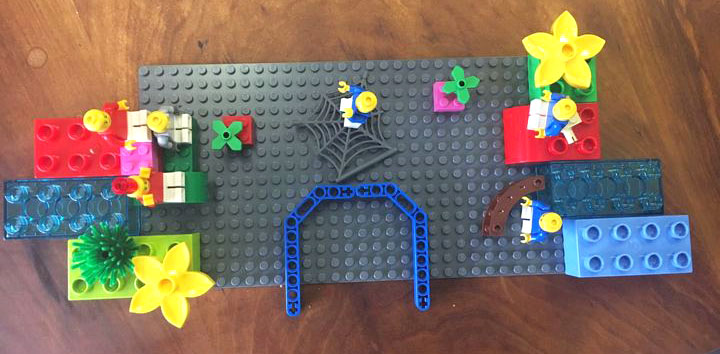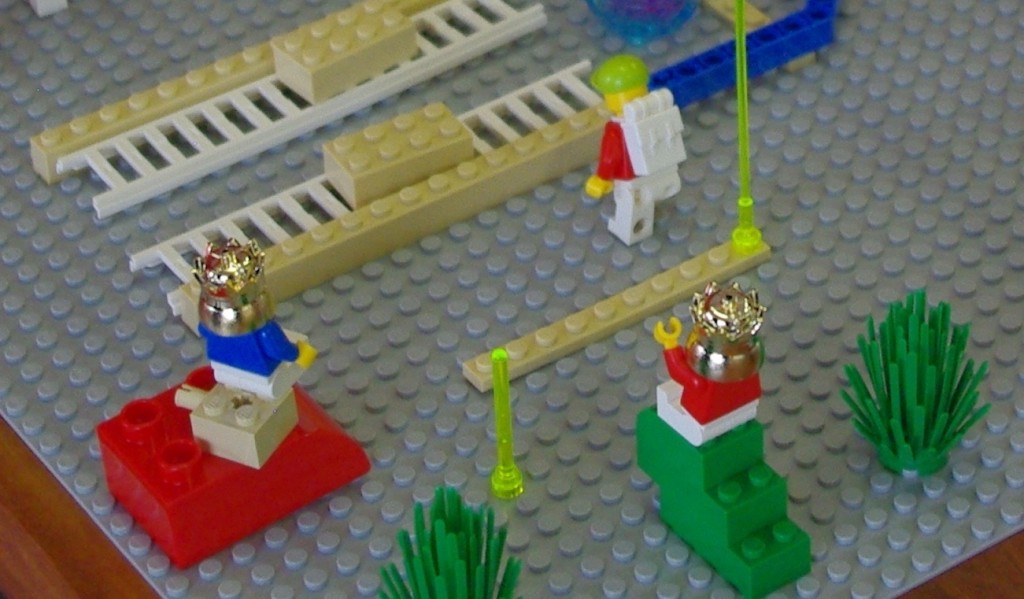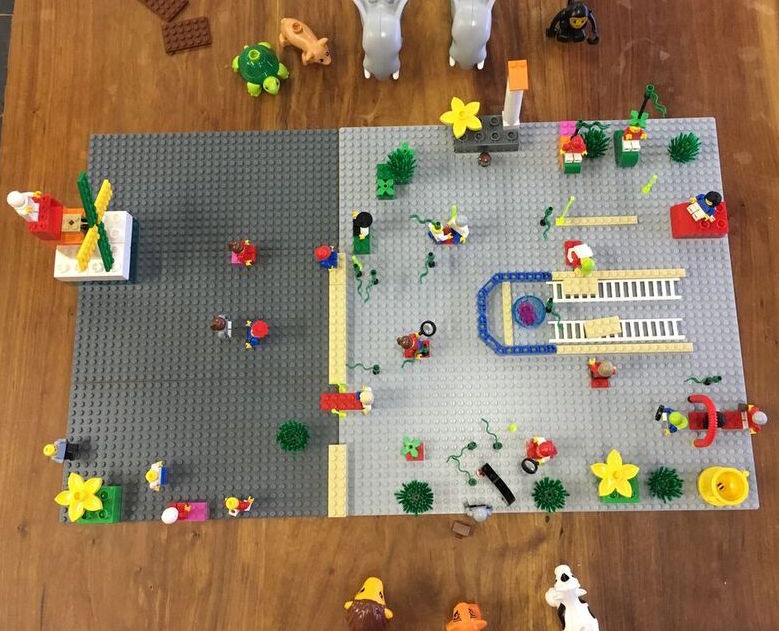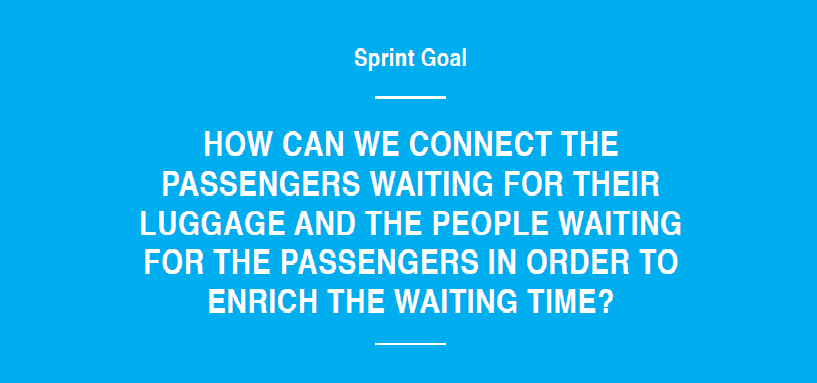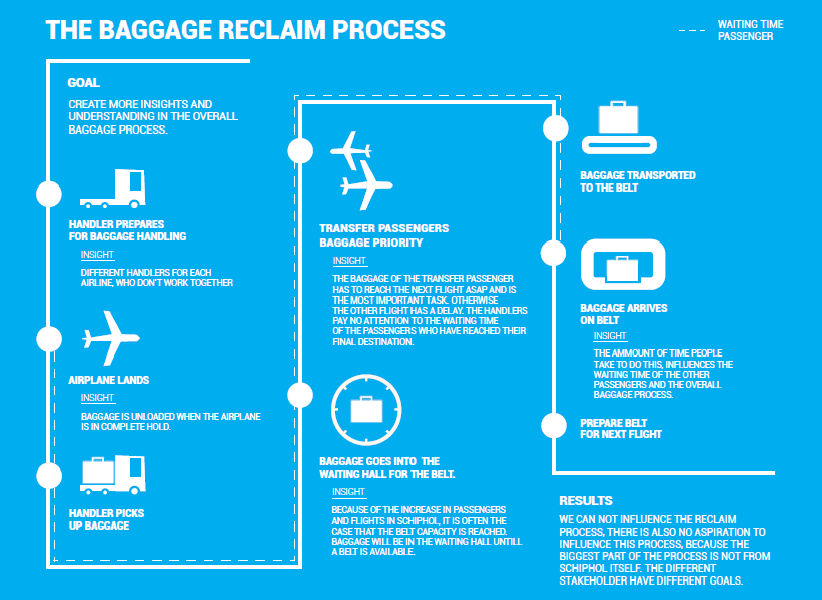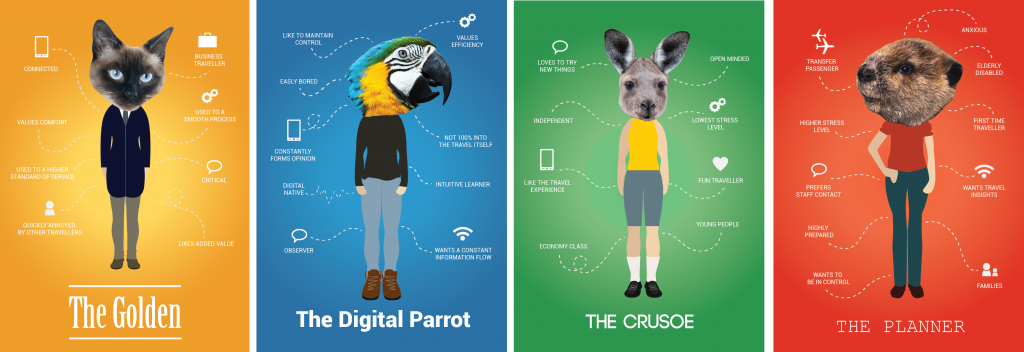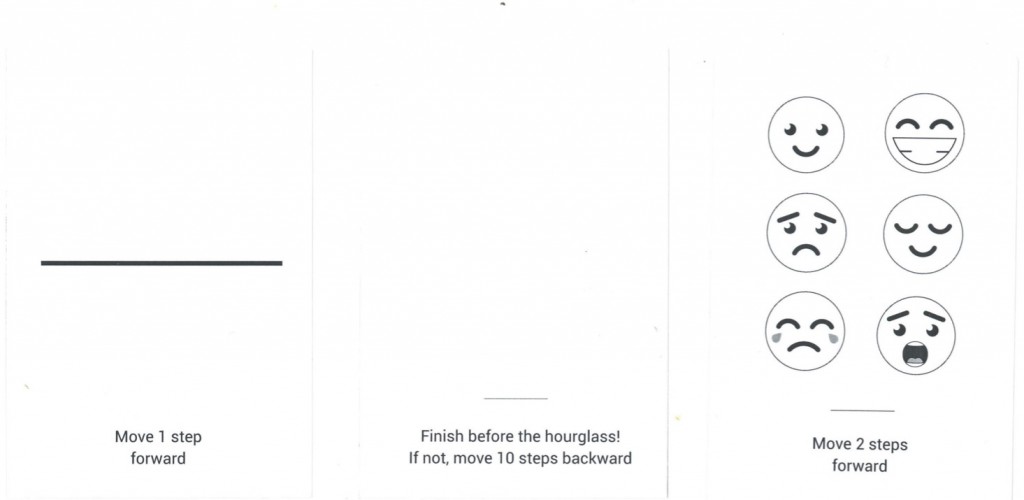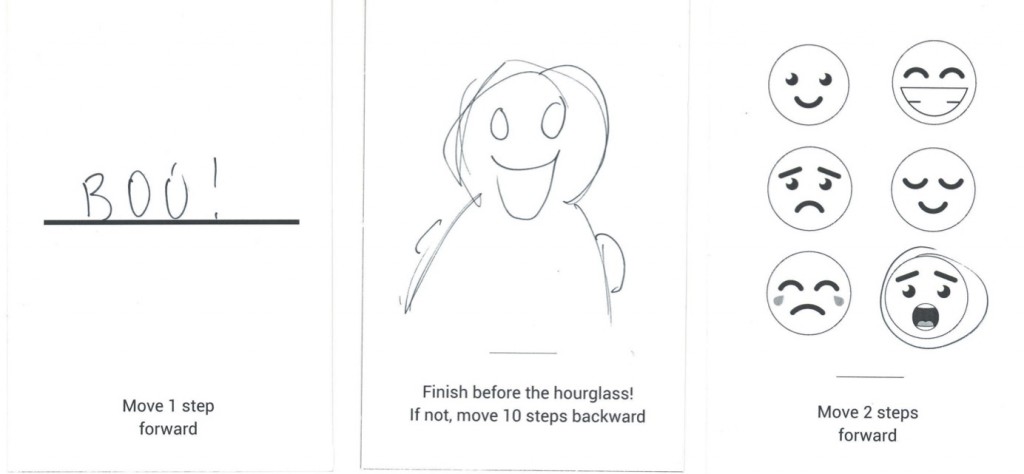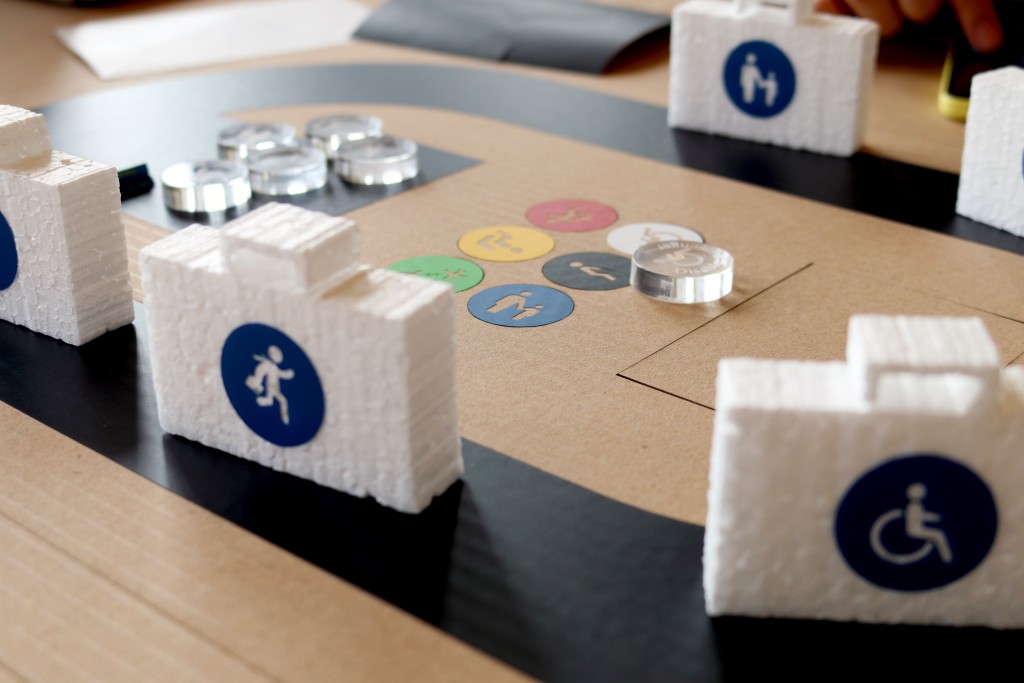Shaping our Family
Our chatbot progressively starts to take shape but what personality should he have ? How should he introduces himself and address to passengers ? To test and improve the level of speech and the conversation flow of the chatbot we decided to led a new test with the passengers within the reclaim. But also in order to better know, the user acceptance and evaluate if the chatbot is a sufficient trigger to motivate passengers to use it. At that point, the prototype wasn’t ready yet to be tested, so we revisited the design method of the wizard of oz.
One member of the team had to mimic the bot, while another member of the team takes notes about the body language and the spatial interactions. The bot mimicry lays on one team member standing in a big speech bubble as an informative poster. The « bot » can only talks and informs by telephone using whatsapp. Marijn, internship mentor and manager at Schiphol, joined the test and helped by introducing the concept to the passengers and inviting them to participate.
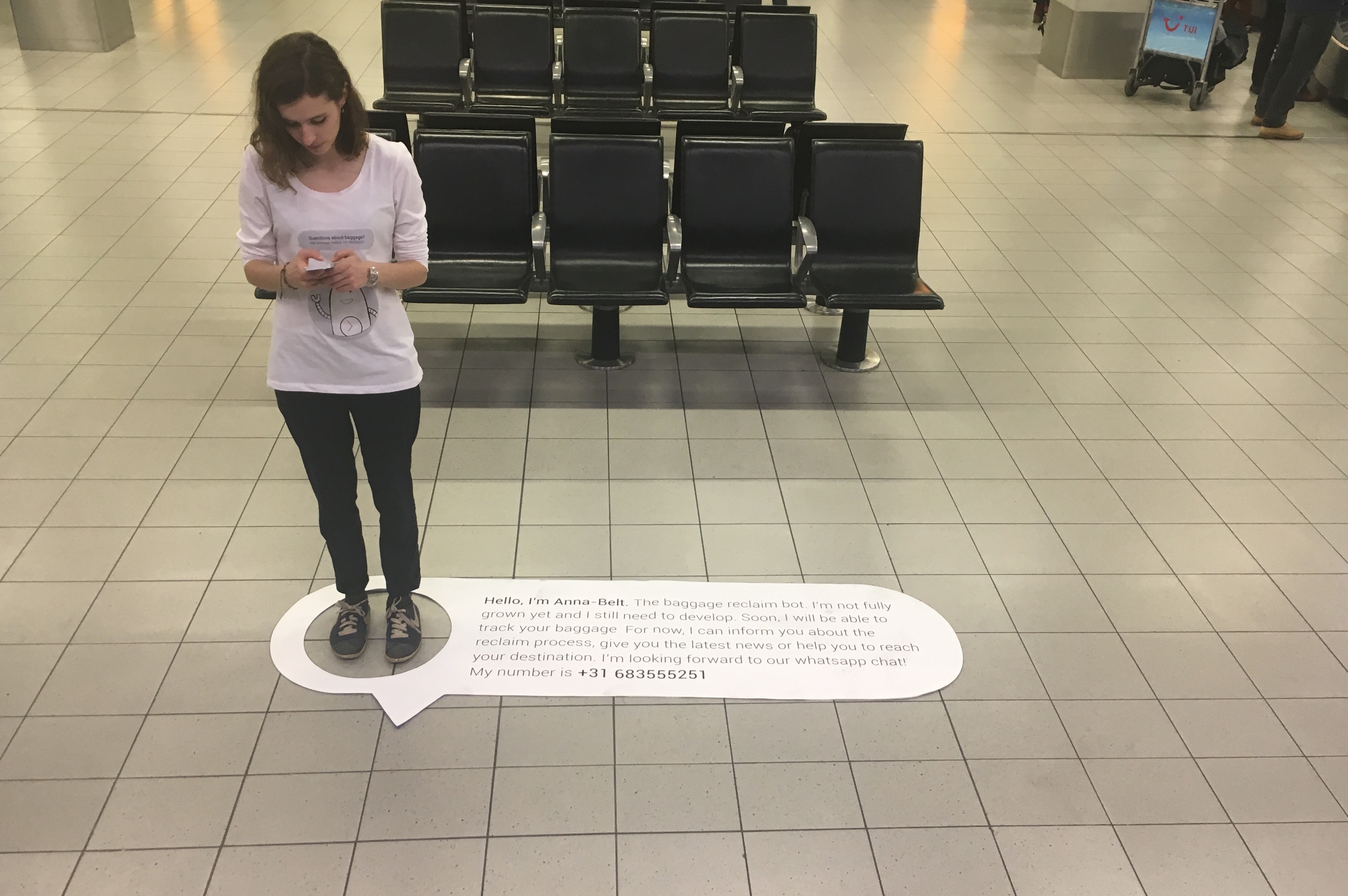
Despite our best smiles and all Marijn efforts, the test wasn’t really successful. Nevertheless, it brought a lot of insights. Notably, that the first touchpoint should be easy to access for the passengers and don’t ask too much effort. For example, in the test we runned, asking passengers to add a phone number in their whatsapp was a task to hard to perform for the value of the service. However, to use their own data or the wifi wasn’t seen a problem for the passengers interested by the service. Likewise, the passengers came to the “bot” before going to the belt and after getting their baggage not while waiting.
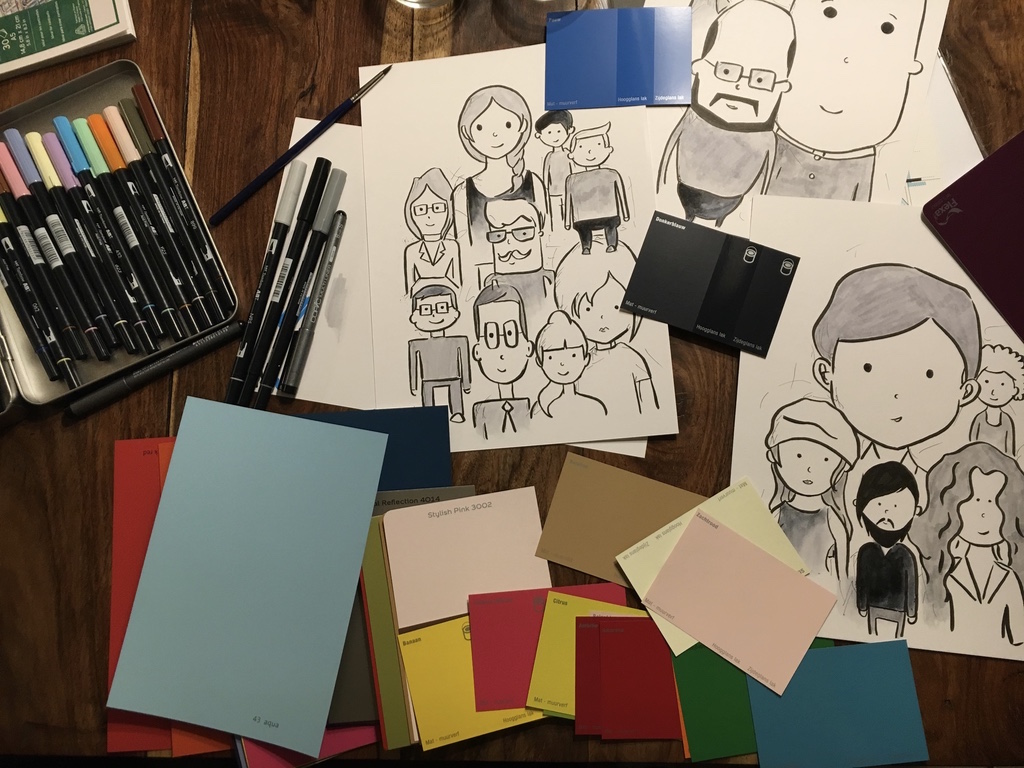
Besides the test, we worked on the identity of our concept. If we had the idea of the chatbot family, the concept was missing a name embodying the service in its entirety and its future extensions.
After a long brainstorm, we went for Fline.

Fline, the only, line you should be in.
Fline is the ChatBot family of Schiphol Airport. From the landing to the arrival hall, the family Belt provides you a personalised assistance every step of your way. Stay connected with your bag thanks to real-time notifications, find the fastest way to reach the city center and discover the stories of Anna, Oddie, Chris & Henk Belt.
With this concept the bag worries of the passengers are being relieved by offering them a service that provides personal information and answers to their worries. It enables the passenger to do something else other than sticking to the belt. The belts are no longer a number but a real persona/bot that has his own stories and personality. For example : Chris is for the belt number 6 and the elder son of the family Belt. Every time you come out of the plane and you put your wifi on, a pop up page appears with the possibility to use the app Fline. After uploading or scanning your ticket, one of the personal assistant of Schiphol gets in touch with you.
1st Touchpoint – Introducing the Family
The passenger will be introduced with the service on the plane. In the plane the passenger can take some time to enjoy the stories about the Belt family and to get to know about the baggage process. This will at first be in the form of a flyer. The flyer will be placed by the airlines in front of the seats of the passengers.
2nd Touchpoint – The corridor Design
When a passenger exit the plane and walks to the baggage reclaim area, he starts to think about his baggage. Whether it has arrived already, where it will arrive and if it will come at all. His bag worries start to be a part of his reclaim experience. During his walk to the reclaim area the passenger is being introduced to the concept. In the corridor the walls cover the family moments of the Belt family. Every family-member moments are being captured and shown to the public. The passenger can see this and feel connected to the the family of whom one member will help him with his baggage assistance.
Idea: Future 100 years in a timeline: 2017 Schiphol welcome the belt family
3th Touchpoint – The web-app
While entering the reclaim area the passenger will be shown the suggestion to scan/ link/ enter the web-app where he can chat with his Belt family member. In this chat environment the passenger can ask about his baggage process and receive options to get more information about certain topics. The topics provided are:
Travel information
When a passenger clicks on the travel information he gets linked to the type of travel that is most convenient for him. For instance, travelers to Amsterdam will get a link to the NS website and can manage their travel. The passenger can choose to follow the link or just go on with the conversation. The reason this information is provided is because test proved that passengers would like public transport information during their waiting time.
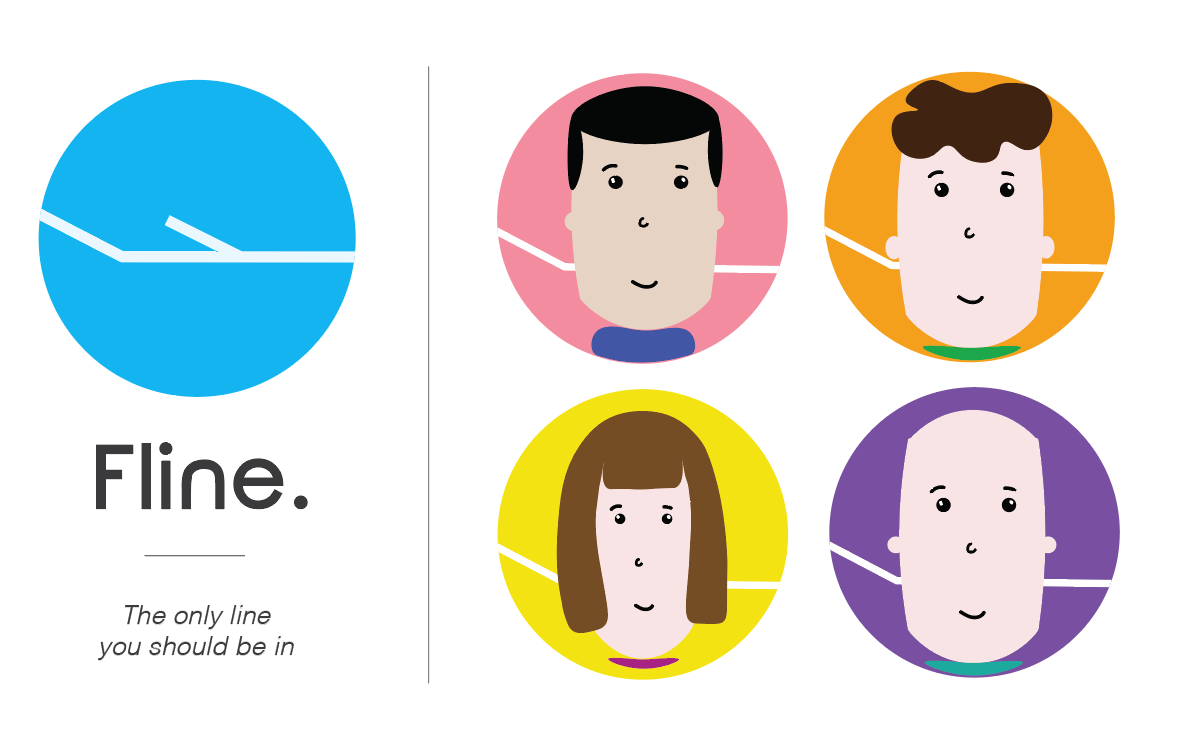
Soon after we have conducted a field survey with arriving passengers at Schiphol Airport. The goal of the survey was to measure the user acceptance of the passengers with the app. And to see if the concept of the family was clear enough. We did this by using a simple clickable prototype of the app and a digital survey on the other hand.
 The results to the test led us to the fact that the passengers where quite enthusiastic about the concept. Especially the element of tracking their baggage and having a sense of control. Also they would trust a chatbot to give them travel advices and information about their baggage.
The results to the test led us to the fact that the passengers where quite enthusiastic about the concept. Especially the element of tracking their baggage and having a sense of control. Also they would trust a chatbot to give them travel advices and information about their baggage.

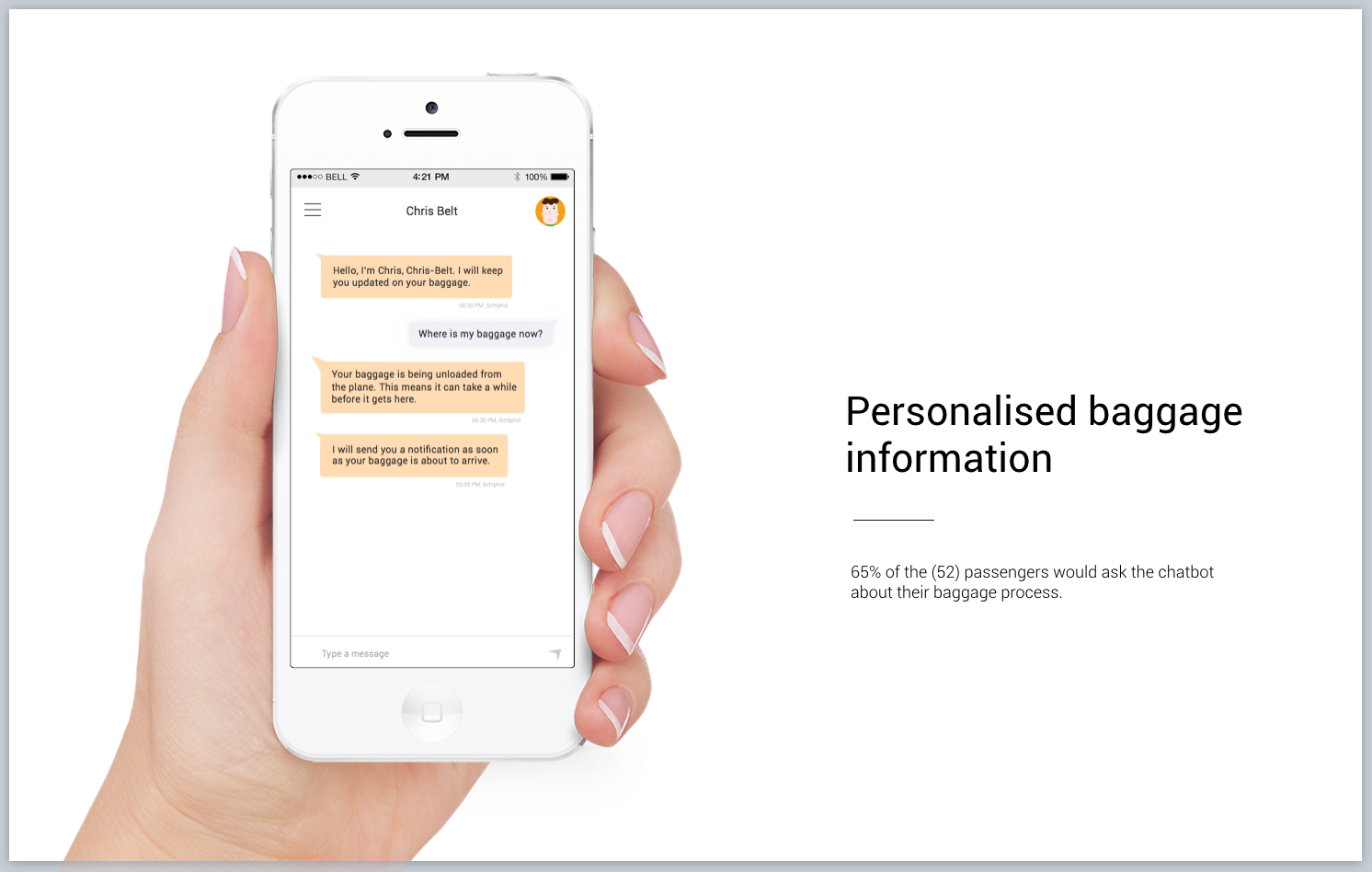

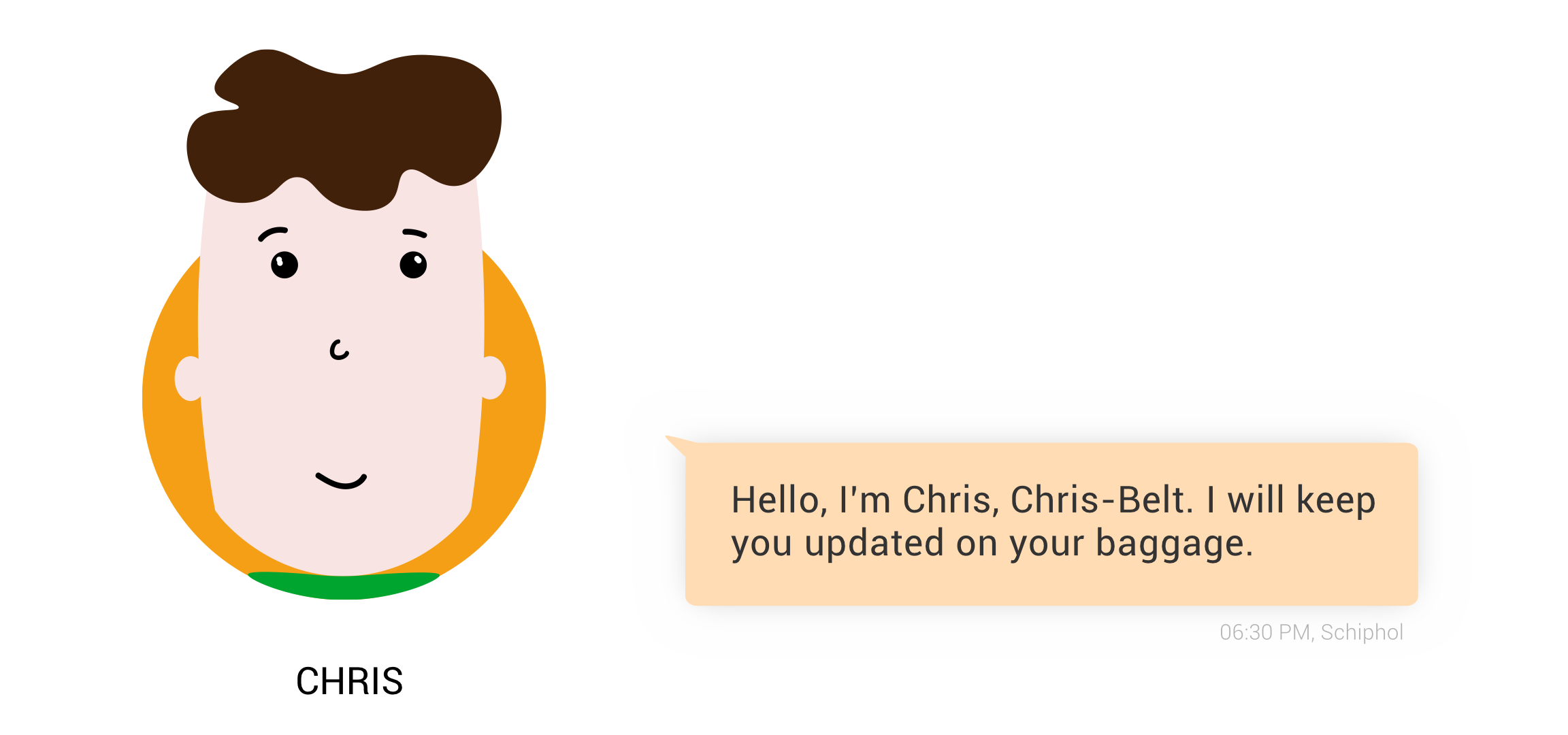






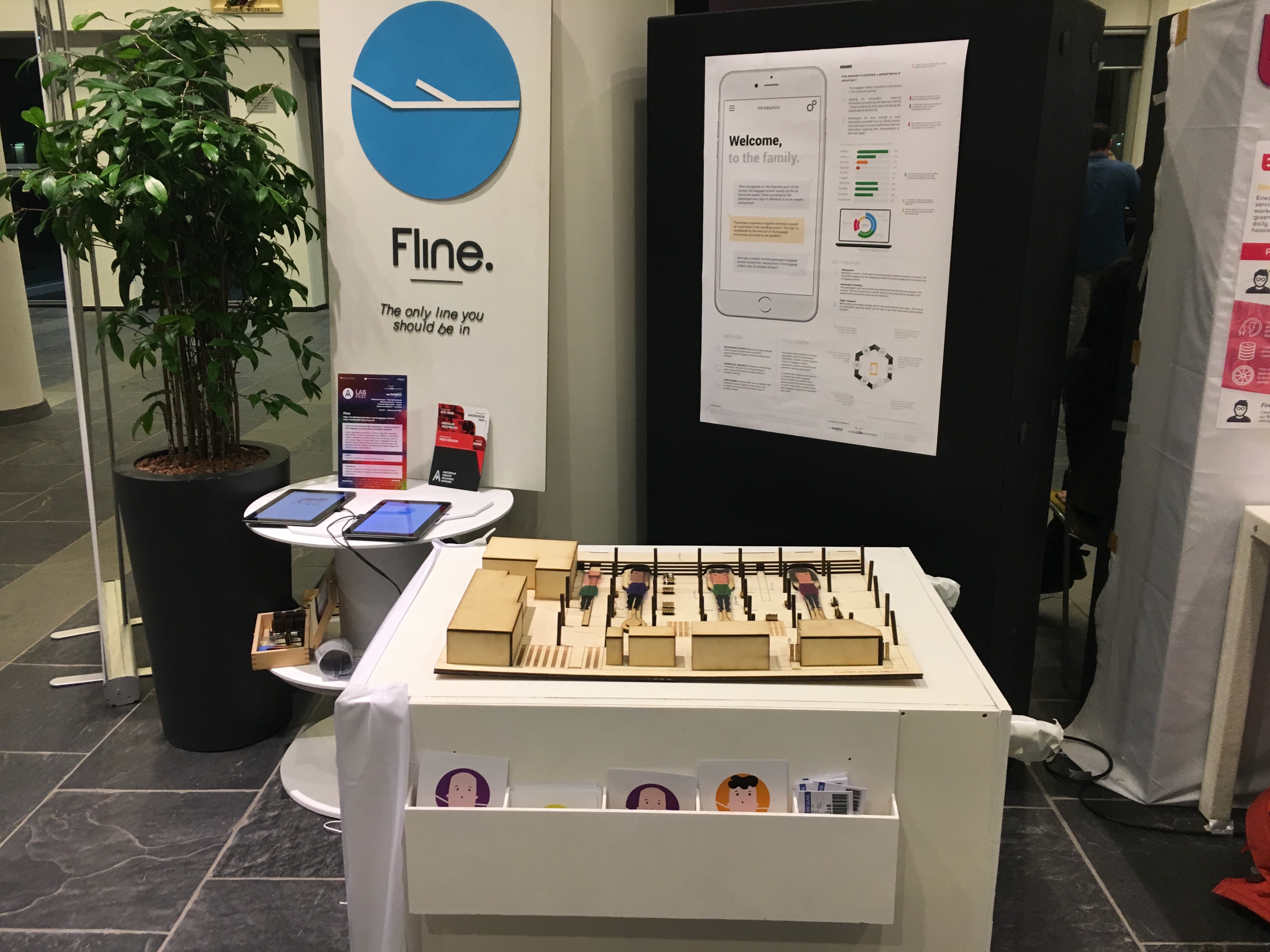





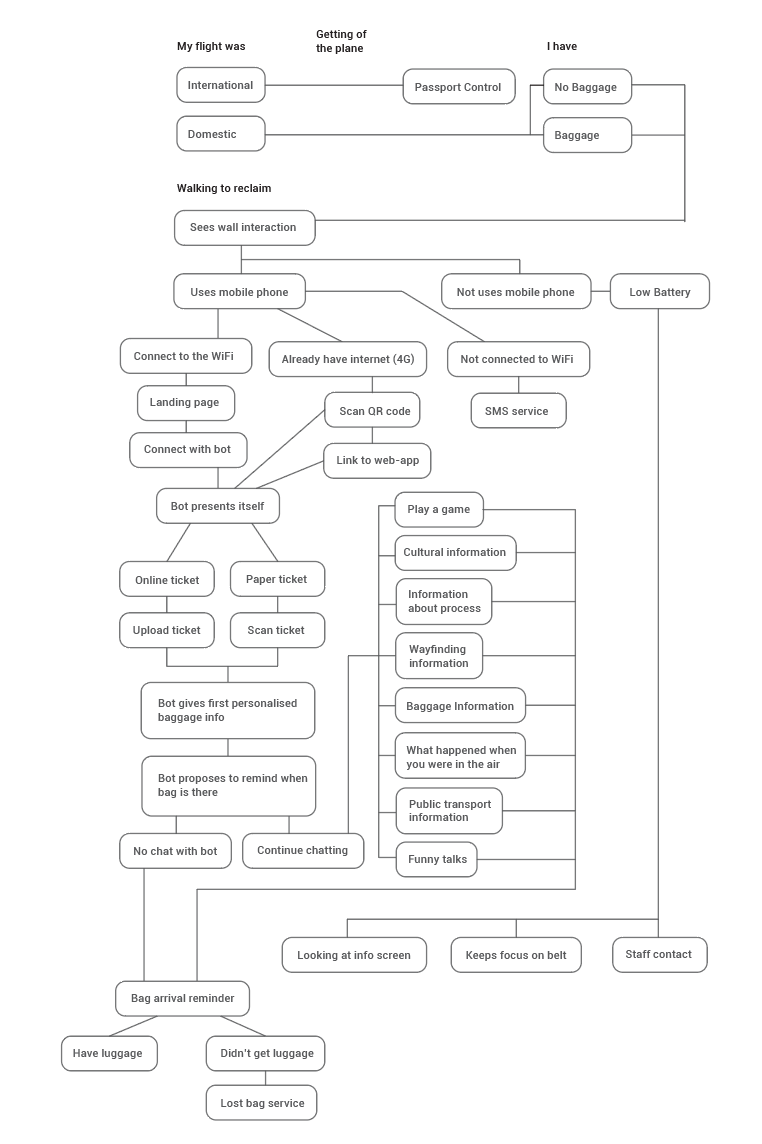
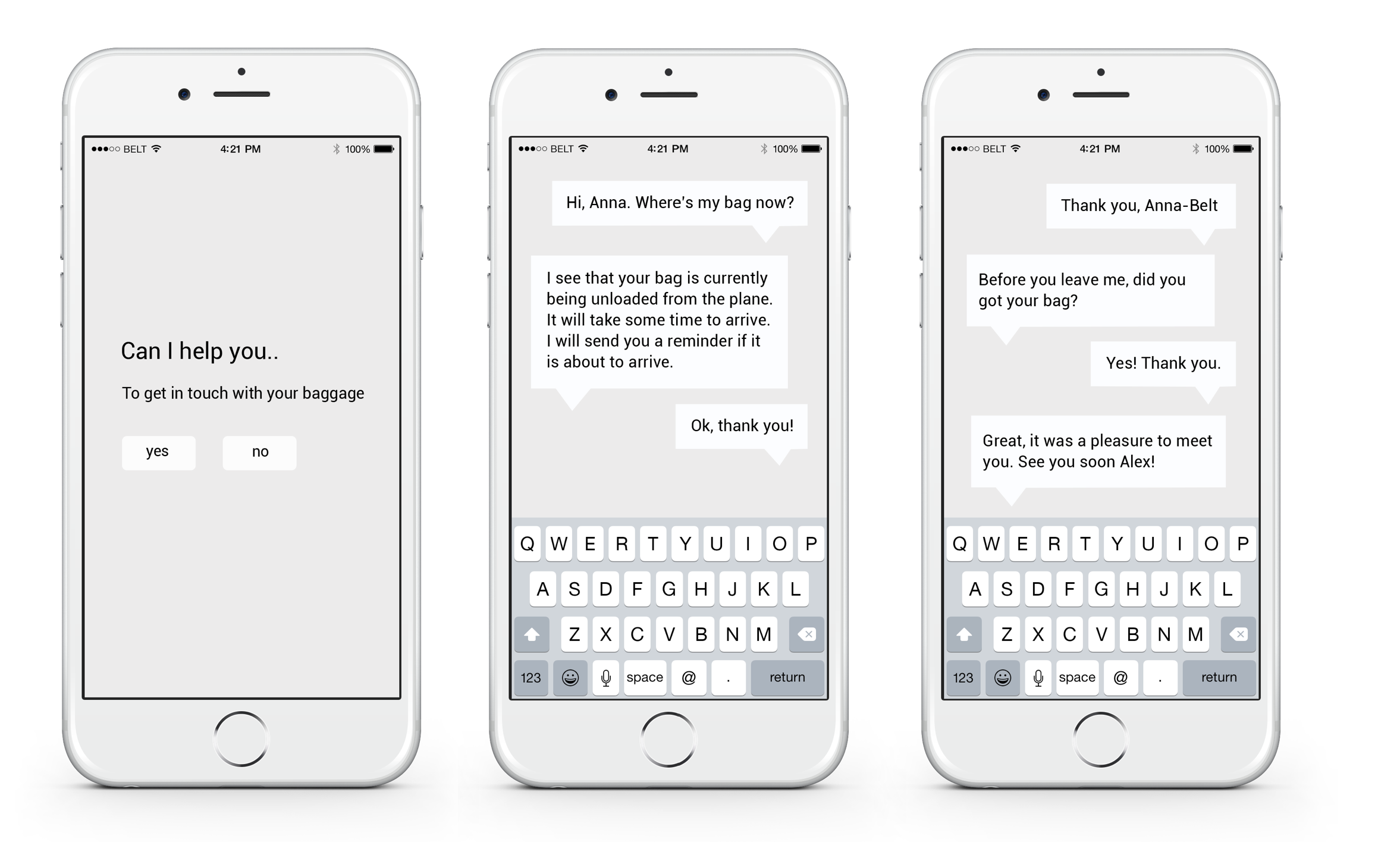
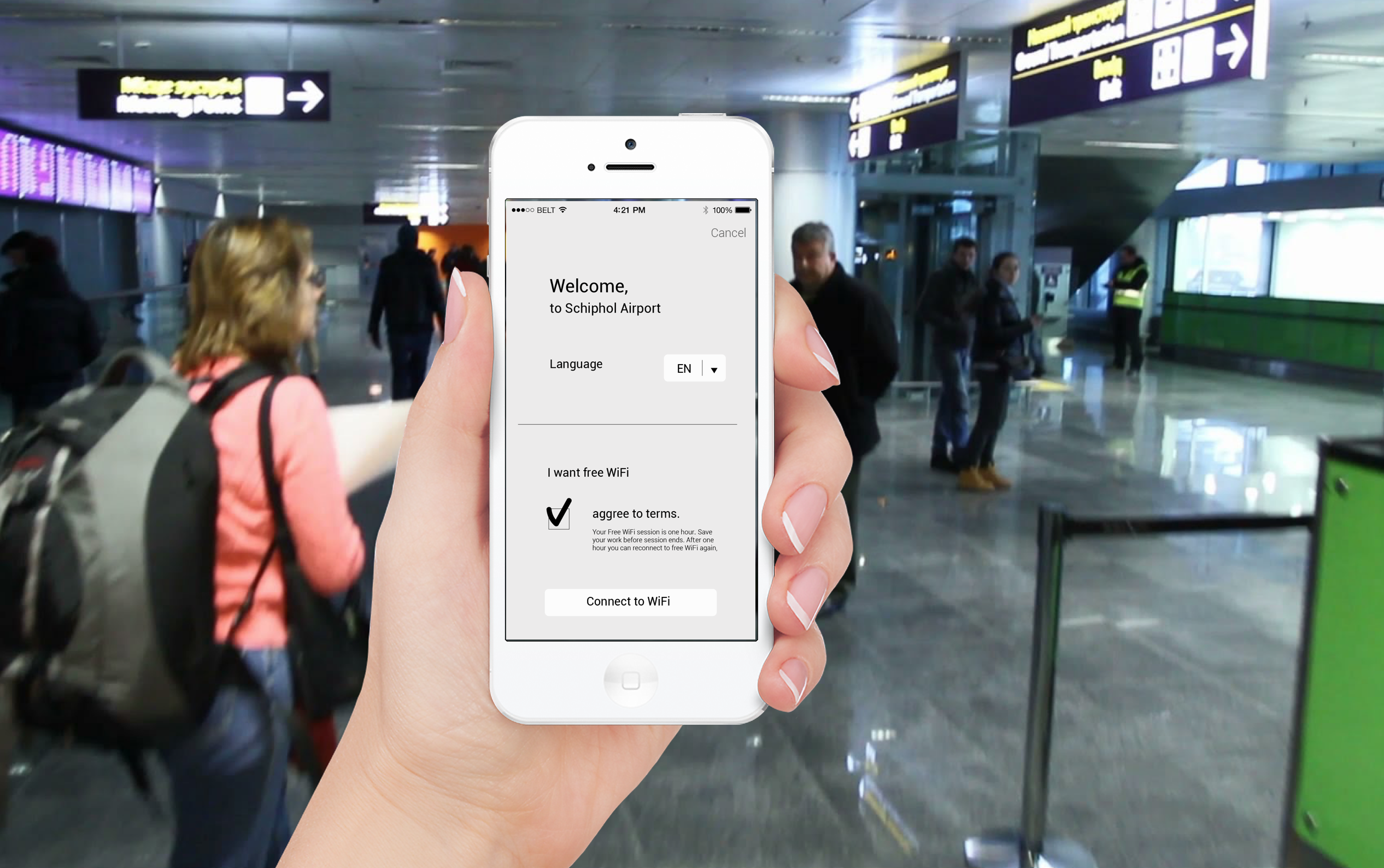

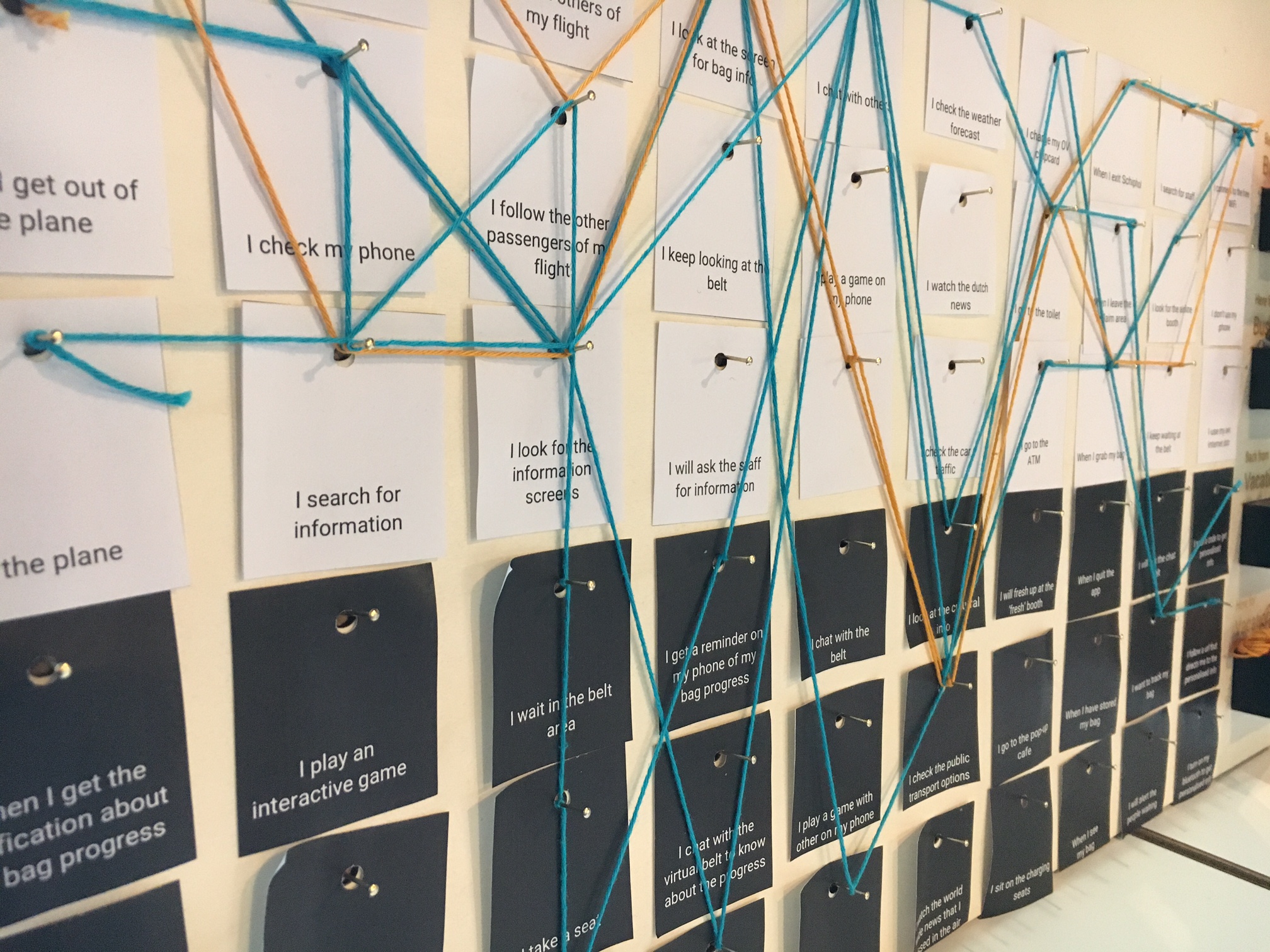
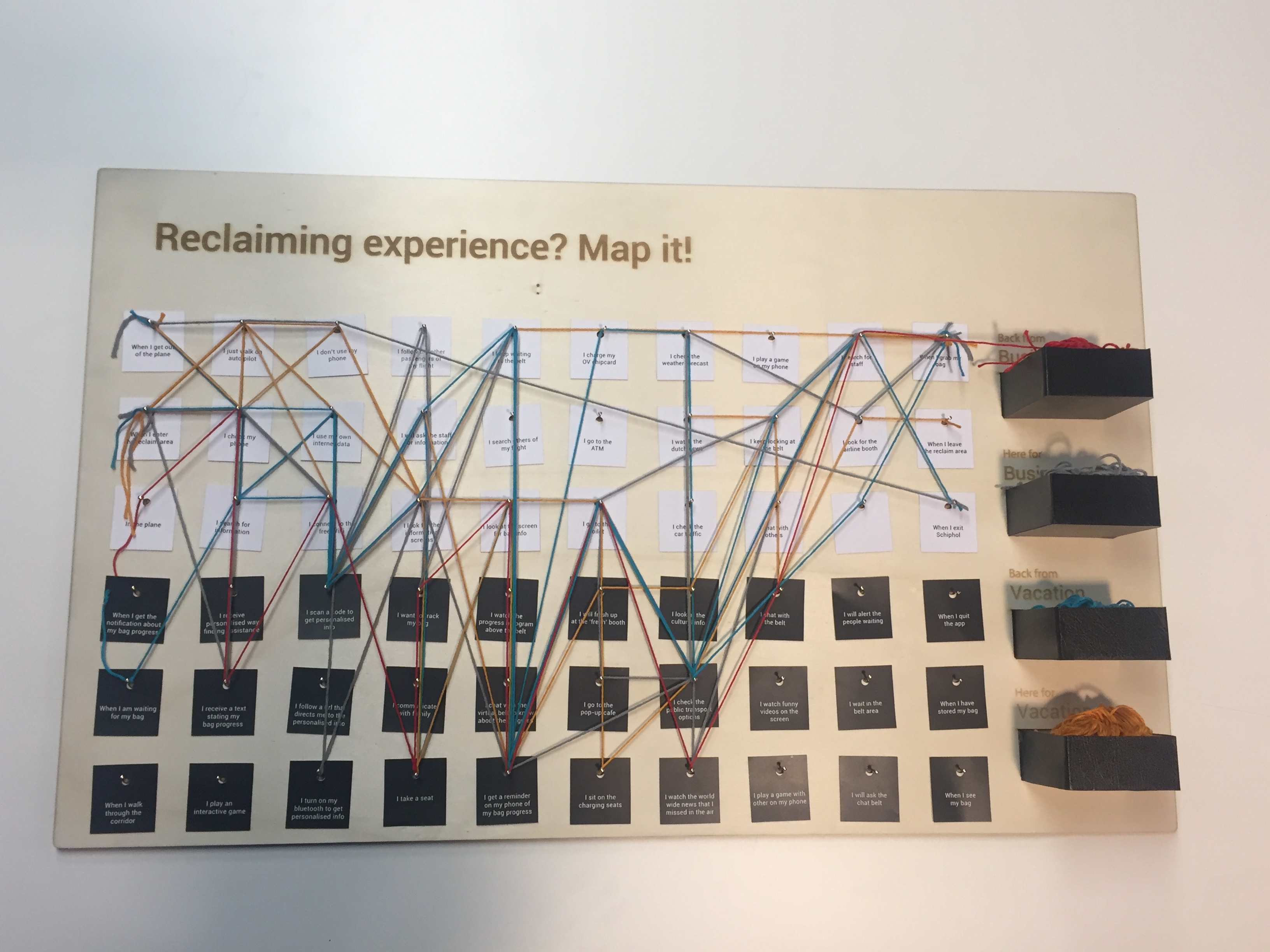
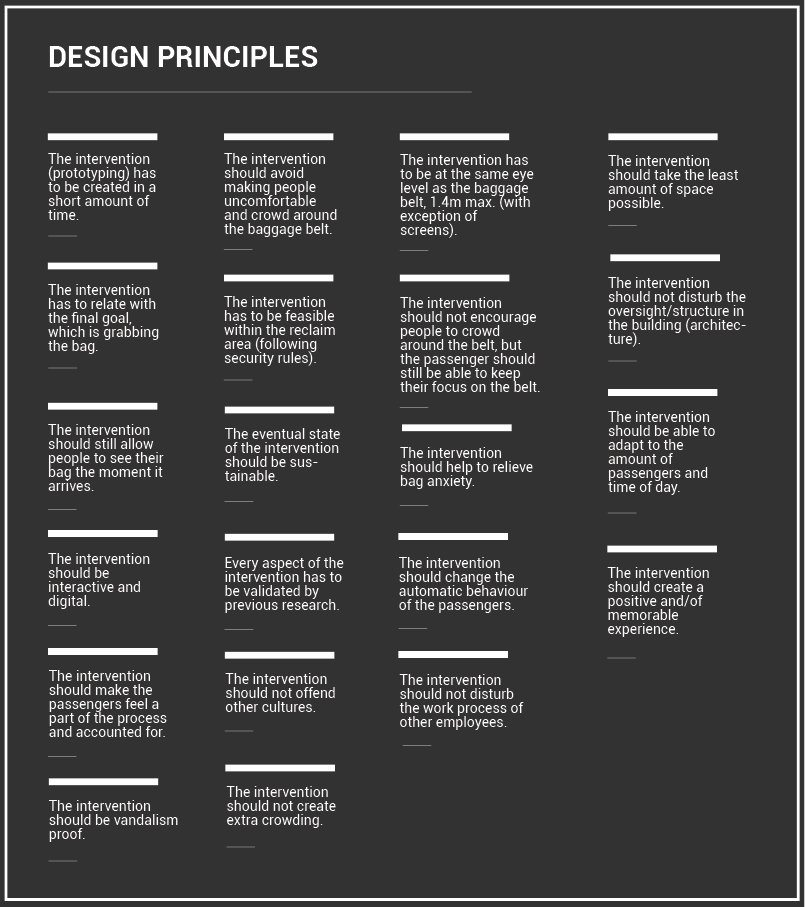
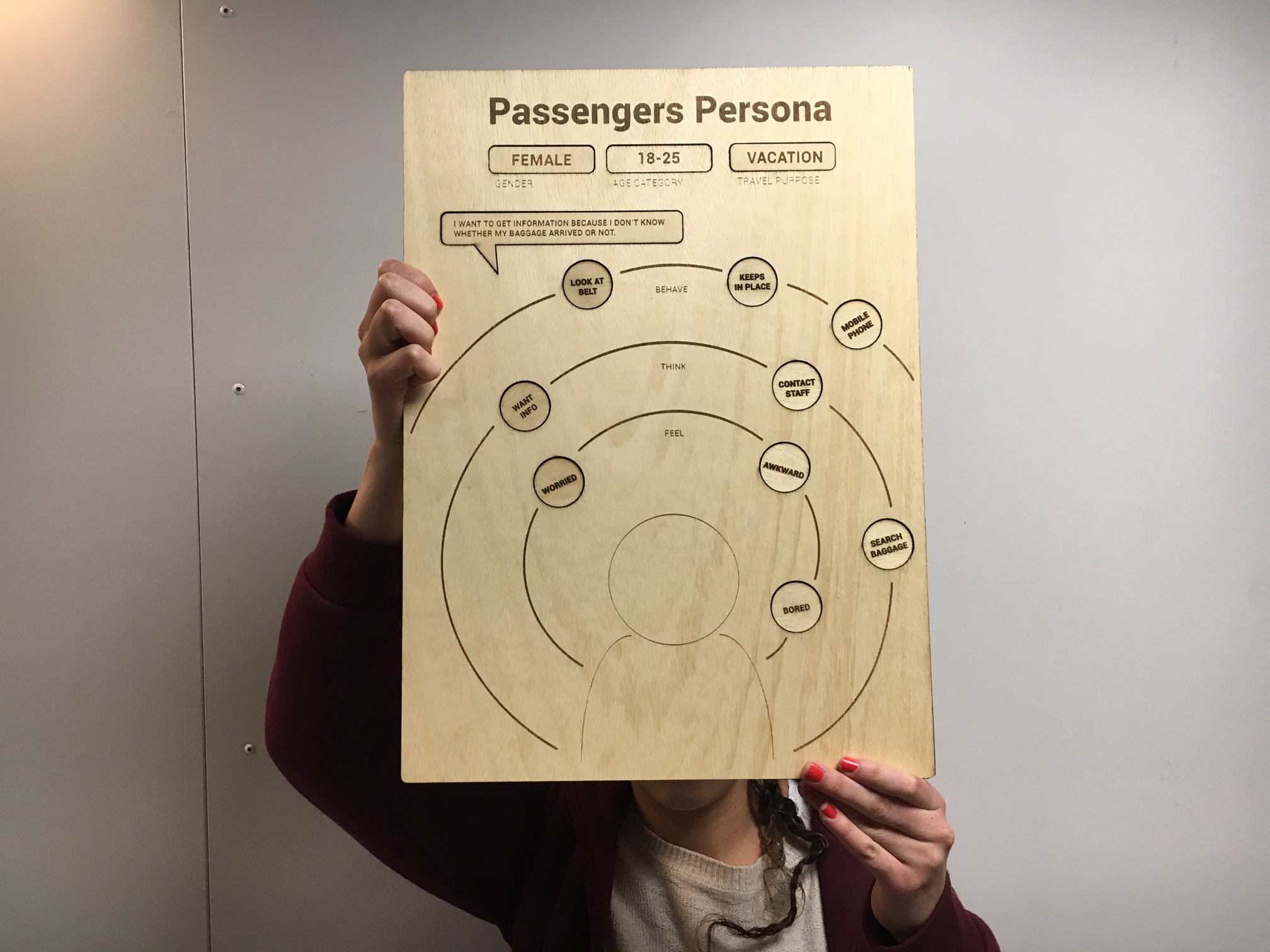

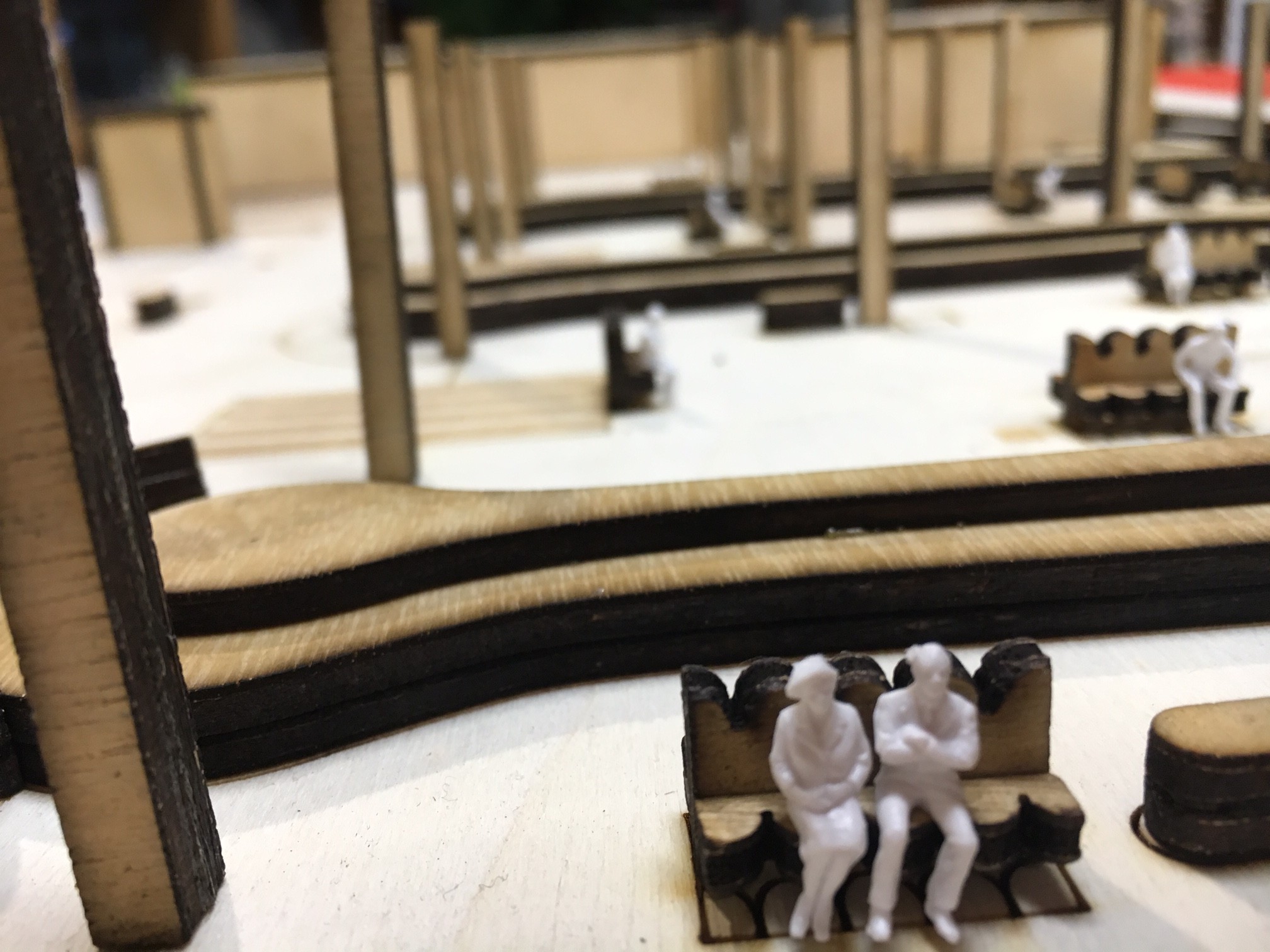

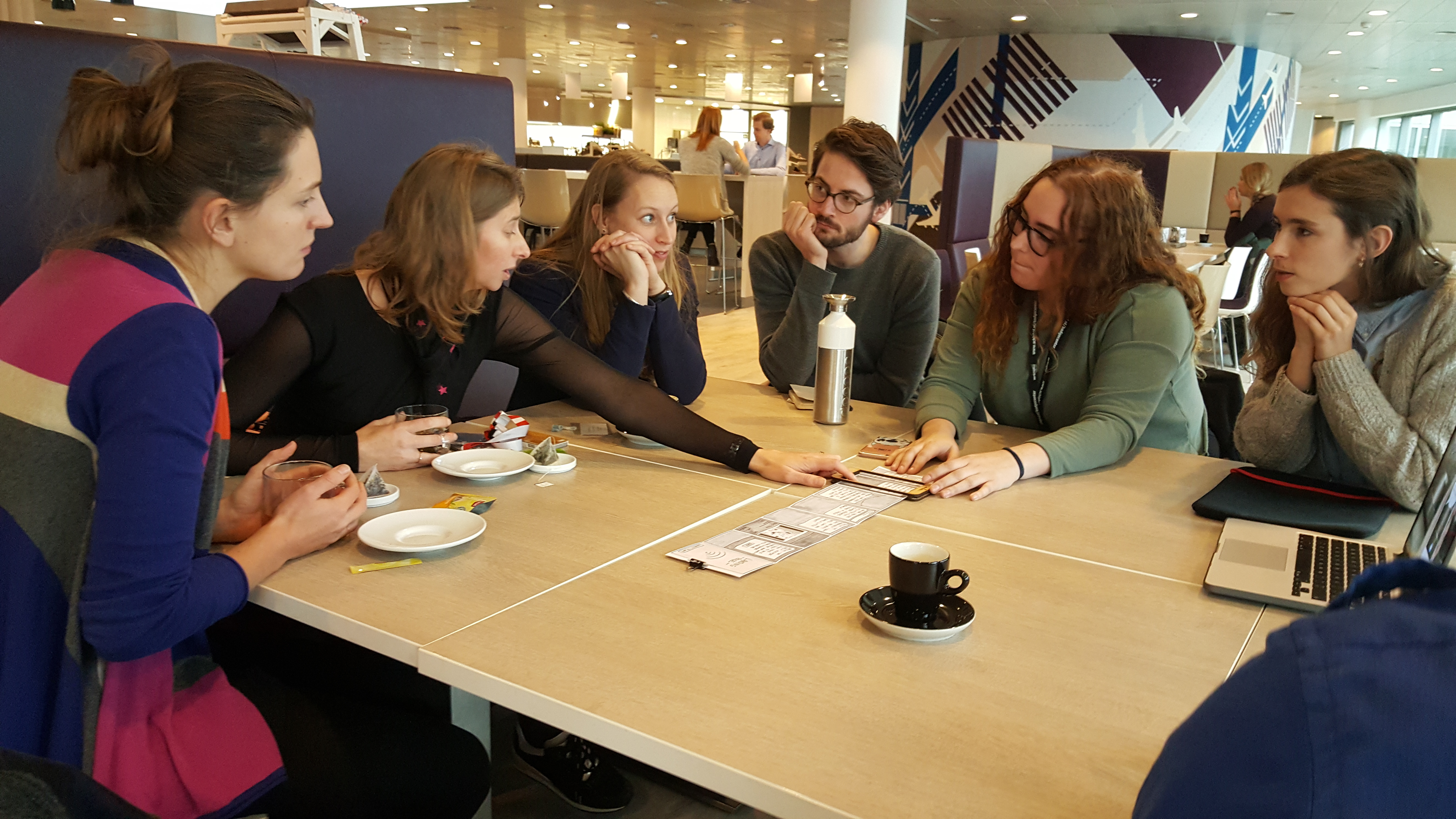
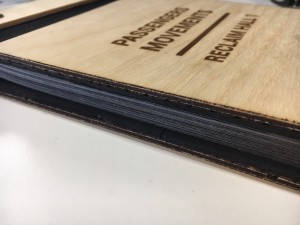
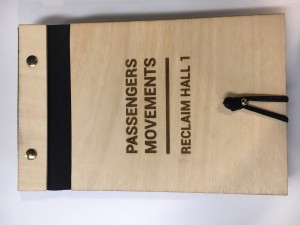

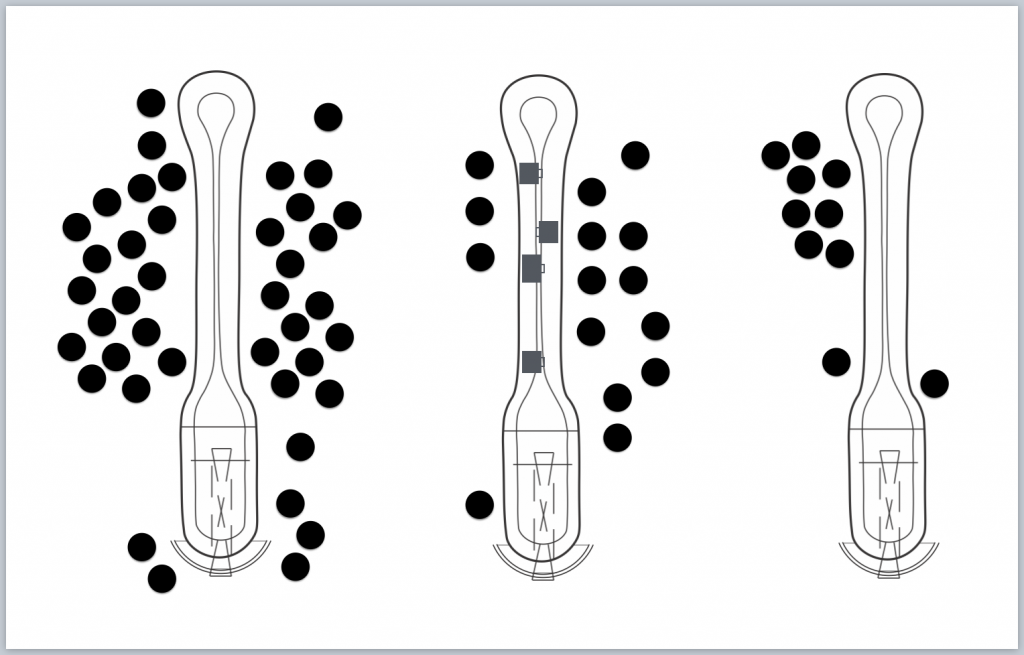 To better understand what lead individual to crowd while waiting and what this automatic behaviour triggers as emotions and feelings, we looked for previous researches on the subject. One of the main findings was that every individual has a field of comfort and a field of influence. The field of influence acts like a magnetic field which attracts individual when their field of comfort overlap. If the field of comfort is independent of the field of influence of another, theres no interaction. And if to much field of comfort overlap, it creates uncomfort and anxiety.
To better understand what lead individual to crowd while waiting and what this automatic behaviour triggers as emotions and feelings, we looked for previous researches on the subject. One of the main findings was that every individual has a field of comfort and a field of influence. The field of influence acts like a magnetic field which attracts individual when their field of comfort overlap. If the field of comfort is independent of the field of influence of another, theres no interaction. And if to much field of comfort overlap, it creates uncomfort and anxiety.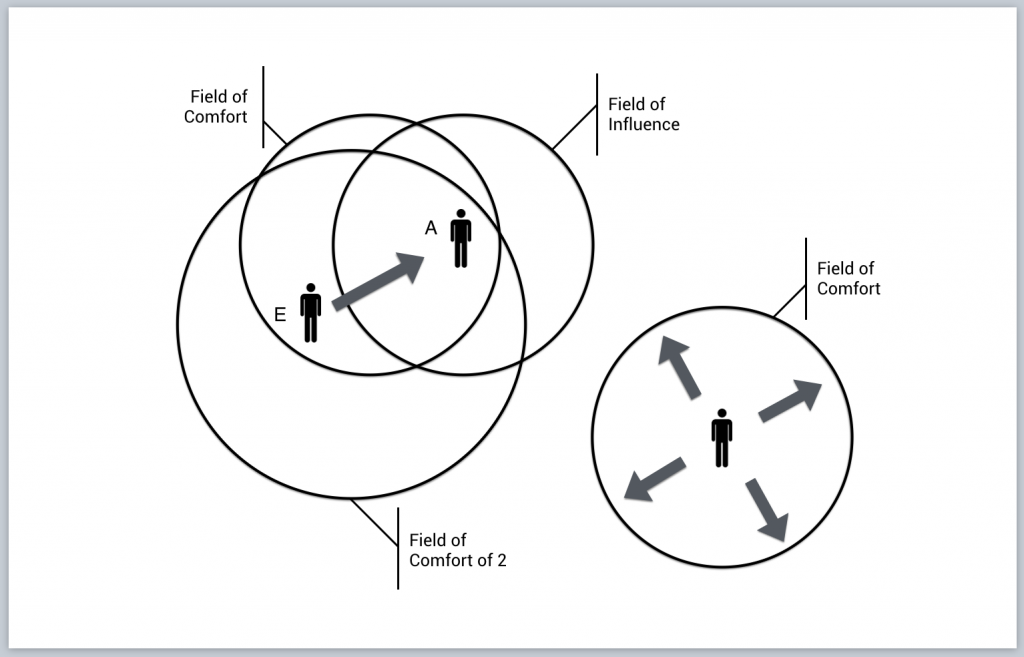 As a result of this literature review, few guidelines were used to conceptualise our design interventions.
As a result of this literature review, few guidelines were used to conceptualise our design interventions.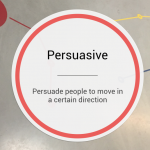
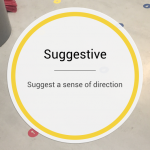
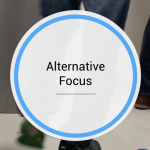
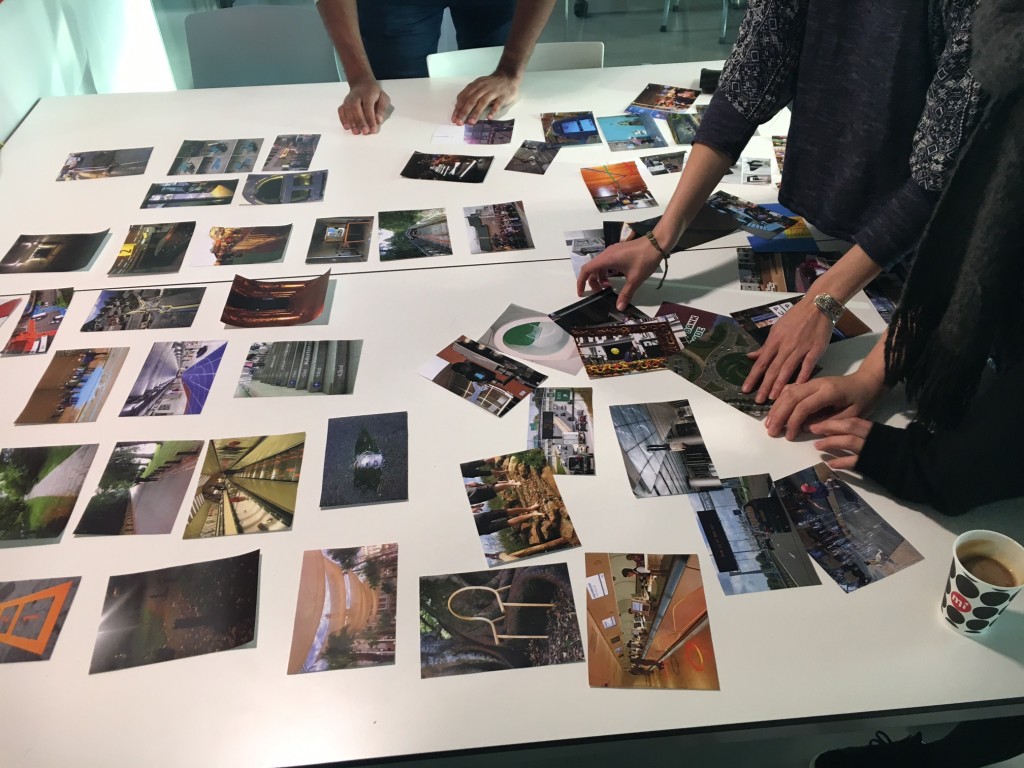





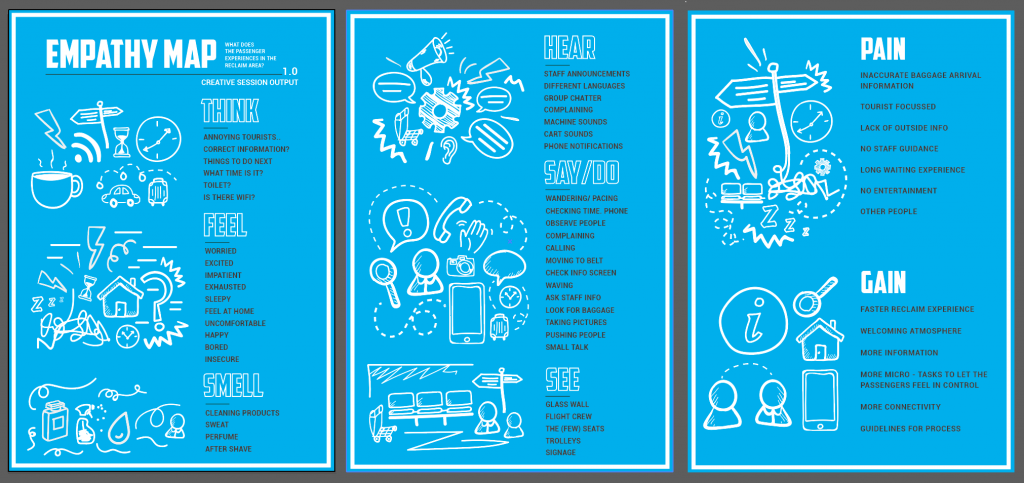
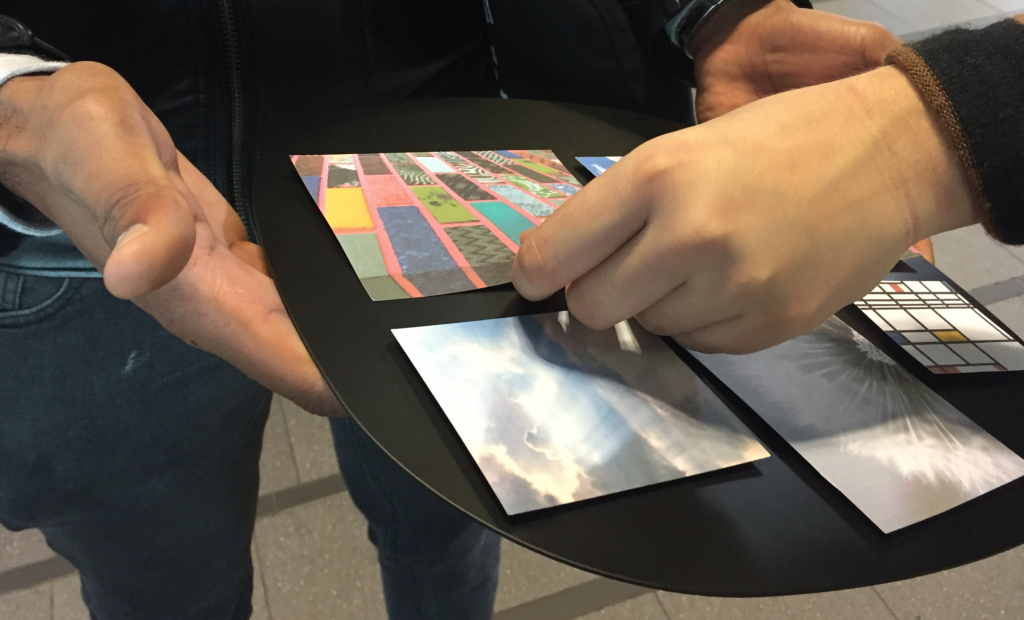
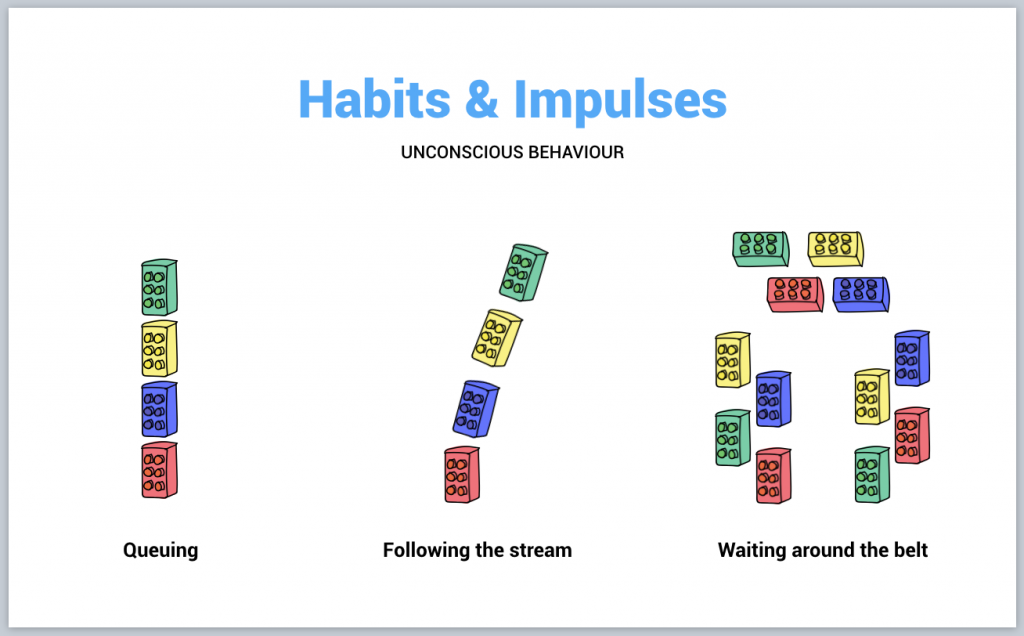
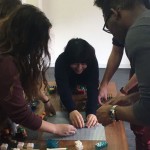
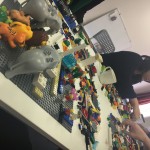
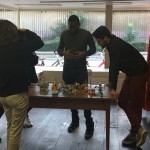
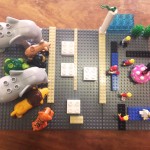 After getting to know how to work with Lego, we started by constructing individually our current vision of the baggage reclaim area. For example, Adinda put on the left side of her display animals representing passengers behaviors in the reclaim area. They are all pushing each others in order to get their baggage as fast as they can. On the right side, she made her ideal version of the reclaim area. Passengers are humans again and behaving consciously. The pink cake represents the product the team could make to enhance the passenger experience in the baggage reclaim are.
After getting to know how to work with Lego, we started by constructing individually our current vision of the baggage reclaim area. For example, Adinda put on the left side of her display animals representing passengers behaviors in the reclaim area. They are all pushing each others in order to get their baggage as fast as they can. On the right side, she made her ideal version of the reclaim area. Passengers are humans again and behaving consciously. The pink cake represents the product the team could make to enhance the passenger experience in the baggage reclaim are.